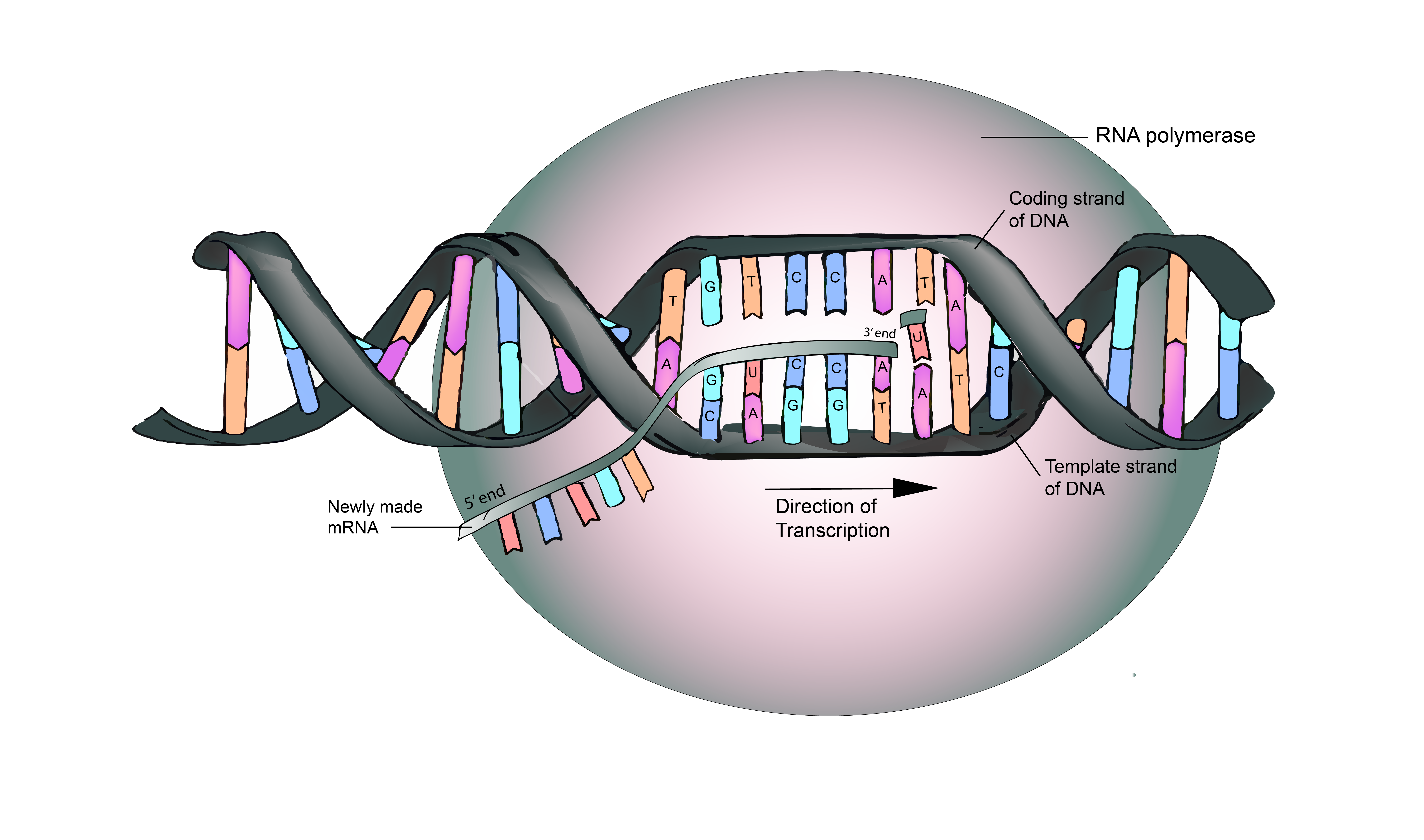5.4 RNA is Transcribed from a DNA Template
RNA molecules originate from a DNA template, through the process of transcription. That is, a single strand of RNA is transcribed from one of the strands of a DNA helix. Namely, the DNA molecule unwinds at the site of the gene to be transcribed. RNA polymerase catalyzes the formation of an RNA molecule (or transcript) based on complementarity with DNA: where there is a guanine (G) in DNA, a complementary cytosine (C) is added to the RNA strand. However, where there is an adenine (A) in the DNA template, a uracil (U) is added to the RNA transcript. For example, the DNA bases TGCACA is transcribed to the RNA bases ACGUGU.
The transcribed RNA then either functions as mRNA, tRNA, or rRNA, with the roles described above. Either way, in eukaryotes such as plants, animals, and fungi, the RNA molecules are constructed in the nucleus of the cell. After transcription, RNA leaves the nucleus to continue protein synthesis in the cytoplasm of the cell.
In prokaryotic organisms such as bacteria, the mRNA transcript is immediately ready for its role in polypeptide formation. But in eukaryotes, extensive processing is required. RNA processing involves editing some nucleotides, removing non-coding regions of DNA, and preparing the transcript for recognition by the ribosome.

Check Yourself
Content on this page was originally published in The Evolution and Biology of Sex by Sehoya Cotner & Deena Wassenberg and is reproduced here in compliance with the original CC-BY-NC 4.0 license.

